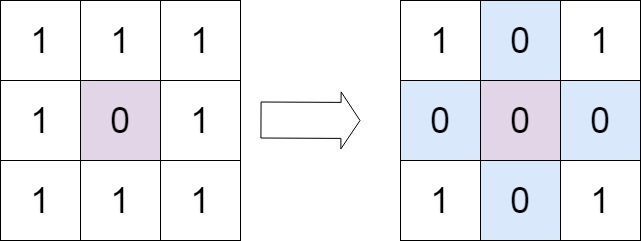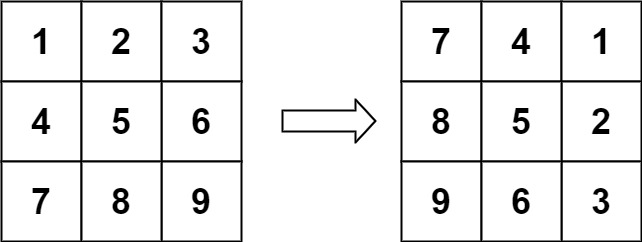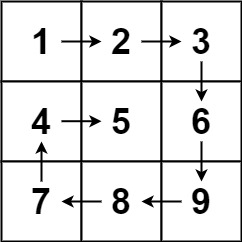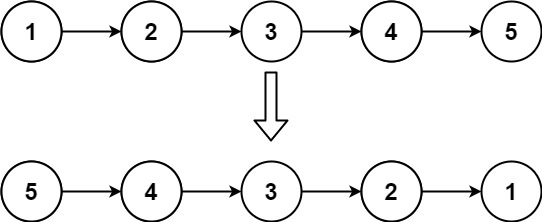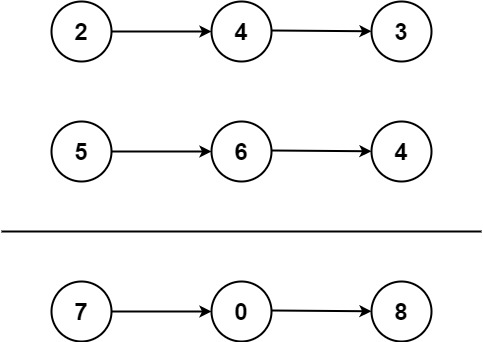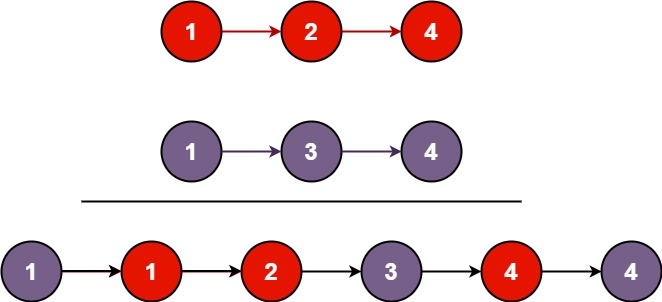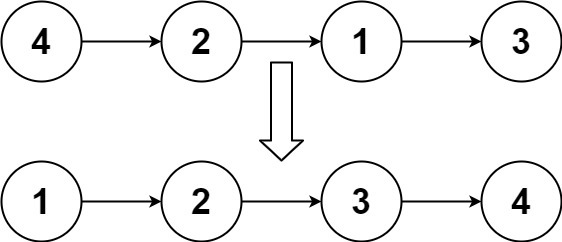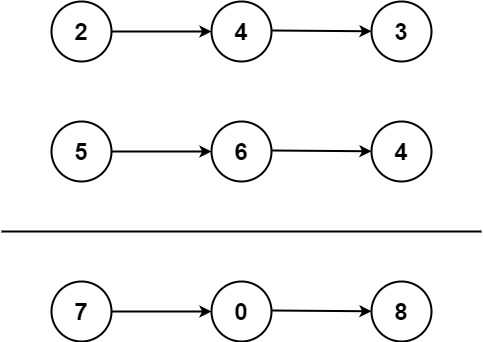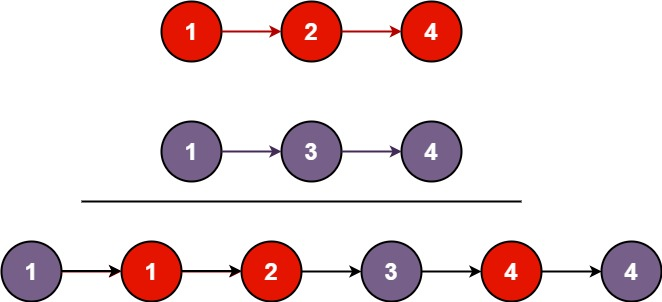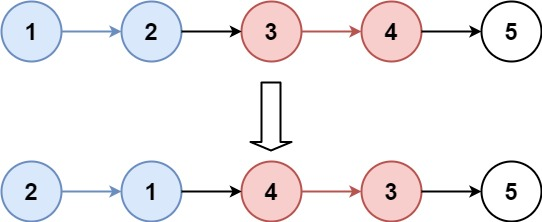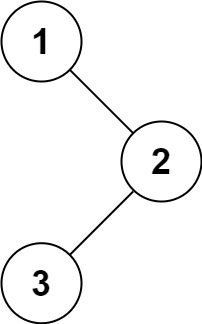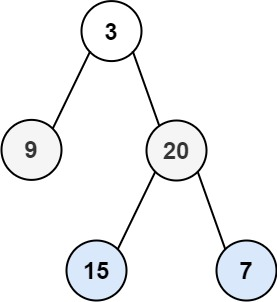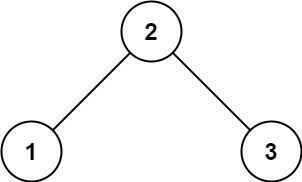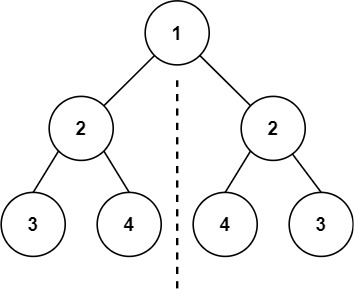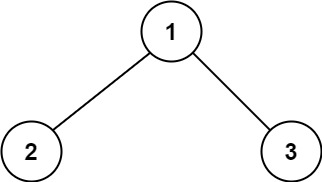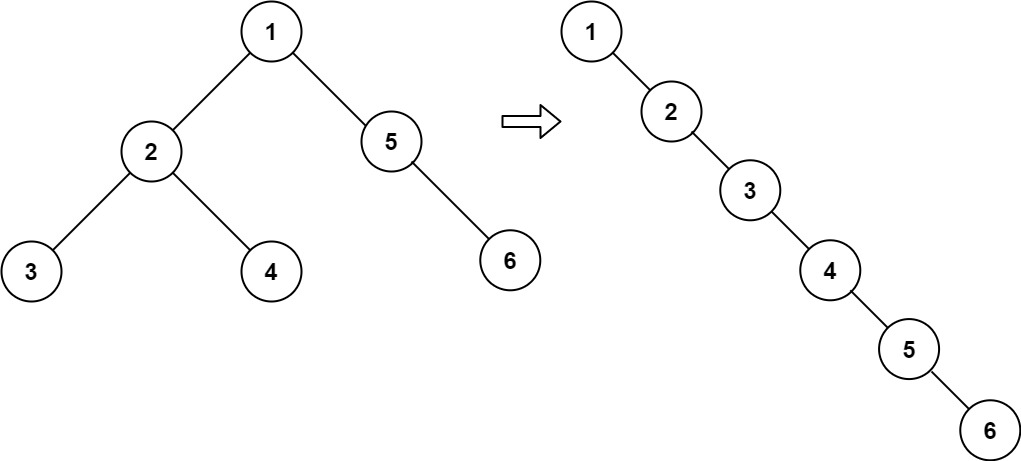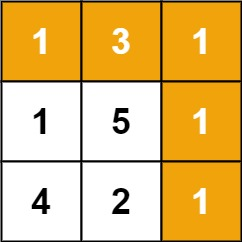数组
最大子数组和
给你一个整数数组 nums ,请你找出一个具有最大和的连续子数组(子数组最少包含一个元素),返回其最大和。
示例:
- 输入:nums = [-2,1,-3,4,-1,2,1,-5,4]
- 输出:6
- 解释:连续子数组 [4,-1,2,1] 的和最大,为 6 。
public static int maxSubArray(int[] nums) {
if (nums == null || nums.length == 0) {
throw new IllegalArgumentException("Array is empty");
}
int n = nums.length;
int[] dp = new int[n];
dp[0] = nums[0];
int maxSum = dp[0];
for (int i = 1; i < n; i++) {
dp[i] = Math.max(nums[i], dp[i - 1] + nums[i]);
maxSum = Math.max(maxSum, dp[i]);
}
return maxSum;
}
合并区间
以数组 intervals 表示若干个区间的集合,其中单个区间为 intervals[i] = [starti, endi] 。请你合并所有重叠的区间,并返回 一个不重叠的区间数组,该数组需恰好覆盖输入中的所有区间 。
示例:
- 输入:intervals = [[1,3],[2,6],[8,10],[15,18]]
- 输出:[[1,6],[8,10],[15,18]]
- 解释:区间 [1,3] 和 [2,6] 重叠, 将它们合并为 [1,6].
public static int[][] merge(int[][] intervals) {
if (intervals == null || intervals.length == 0) {
return new int[0][0];
}
// Sort intervals by starting time
Arrays.sort(intervals, Comparator.comparingInt(a -> a[0]));
List<int[]> merged = new LinkedList<>();
int[] currentInterval = intervals[0];
merged.add(currentInterval);
for (int i = 1; i < intervals.length; i++) {
int[] interval = intervals[i];
// If the current interval overlaps with the new interval
if (currentInterval[1] >= interval[0]) {
// Merge the current interval with the new interval
currentInterval[1] = Math.max(currentInterval[1], interval[1]);
} else {
// If no overlap, add the current interval to the result
// and start a new interval
currentInterval = interval;
merged.add(currentInterval);
}
}
return merged.toArray(new int[merged.size()][]);
}
轮转数组
给定一个整数数组 nums,将数组中的元素向右轮转 k 个位置,其中 k 是非负数。
示例:
- 输入: nums = [1,2,3,4,5,6,7], k = 3
- 输出: [5,6,7,1,2,3,4]
- 解释:
向右轮转 1 步: [7,1,2,3,4,5,6]
向右轮转 2 步: [6,7,1,2,3,4,5]
向右轮转 3 步: [5,6,7,1,2,3,4]
public class ArrayRotation {
// 向右轮转数组
public static void rotate(int[] nums, int k) {
int n = nums.length;
if (n == 0 || k % n == 0) {
return; // 如果数组为空或 k 是数组长度的倍数,则不需要旋转
}
k = k % n; // 处理 k 大于数组长度的情况
reverse(nums, 0, n - 1); // 反转整个数组
reverse(nums, 0, k - 1); // 反转前 k 个元素
reverse(nums, k, n - 1); // 反转后 n - k 个元素
}
// 反转数组的部分
private static void reverse(int[] nums, int start, int end) {
while (start < end) {
int temp = nums[start];
nums[start] = nums[end];
nums[end] = temp;
start++;
end--;
}
}
}
除自身以外数组的乘积
给你一个整数数组 nums,返回 数组 answer ,其中 answer[i] 等于 nums 中除 nums[i] 之外其余各元素的乘积 。
题目数据 保证 数组 nums之中任意元素的全部前缀元素和后缀的乘积都在 32 位 整数范围内。
请 不要使用除法,且在 O(n) 时间复杂度内完成此题。
示例:
- 输入: nums = [1,2,3,4]
- 输出: [24,12,8,6]
public class ProductArray {
// 计算除自身以外的数组乘积
public static int[] productExceptSelf(int[] nums) {
int n = nums.length;
int[] leftProducts = new int[n];
int[] rightProducts = new int[n];
int[] result = new int[n];
// 计算左侧乘积
leftProducts[0] = 1;
for (int i = 1; i < n; i++) {
leftProducts[i] = leftProducts[i - 1] * nums[i - 1];
}
// 计算右侧乘积
rightProducts[n - 1] = 1;
for (int i = n - 2; i >= 0; i--) {
rightProducts[i] = rightProducts[i + 1] * nums[i + 1];
}
// 计算结果数组
for (int i = 0; i < n; i++) {
result[i] = leftProducts[i] * rightProducts[i];
}
return result;
}
}
缺失的第一个正数
给你一个未排序的整数数组 nums ,请你找出其中没有出现的最小的正整数。
示例:
- 输入:nums = [3,4,-1,1]
- 输出:2
- 解释:1 在数组中,但 2 没有。
public static int firstMissingPositive(int[] nums) {
int n = nums.length;
// 标记所有小于等于 0 或大于 n 的数为 n + 1
for (int i = 0; i < n; i++) {
if (nums[i] <= 0 || nums[i] > n) {
nums[i] = n + 1;
}
}
// 将每个正整数映射到对应的索引位置
for (int i = 0; i < n; i++) {
int num = Math.abs(nums[i]);
if (num <= n) {
nums[num - 1] = -Math.abs(nums[num - 1]);
}
}
// 查找第一个未出现的正整数
for (int i = 0; i < n; i++) {
if (nums[i] > 0) {
return i + 1;
}
}
// 如果所有 1 到 n 的正整数都出现了,则返回 n + 1
return n + 1;
}
矩阵置零
给定一个 m x n 的矩阵,如果一个元素为 0 ,则将其所在行和列的所有元素都设为 0 。请使用 原地 算法。
示例:
- 输入:matrix = [[1,1,1],[1,0,1],[1,1,1]]
- 输出:[[1,0,1],[0,0,0],[1,0,1]]
public class MatrixZeroes {
public static void setZeroes(int[][] matrix) {
if (matrix == null || matrix.length == 0) {
return;
}
int m = matrix.length;
int n = matrix[0].length;
boolean firstRowZero = false;
boolean firstColZero = false;
// Check if the first row needs to be zeroed
for (int j = 0; j < n; j++) {
if (matrix[0][j] == 0) {
firstRowZero = true;
break;
}
}
// Check if the first column needs to be zeroed
for (int i = 0; i < m; i++) {
if (matrix[i][0] == 0) {
firstColZero = true;
break;
}
}
// Use the first row and first column as markers
for (int i = 1; i < m; i++) {
for (int j = 1; j < n; j++) {
if (matrix[i][j] == 0) {
matrix[i][0] = 0; // Mark the row
matrix[0][j] = 0; // Mark the column
}
}
}
// Zero out cells based on markers in the first row and first column
for (int i = 1; i < m; i++) {
for (int j = 1; j < n; j++) {
if (matrix[i][0] == 0 || matrix[0][j] == 0) {
matrix[i][j] = 0;
}
}
}
// Zero out the first row if needed
if (firstRowZero) {
for (int j = 0; j < n; j++) {
matrix[0][j] = 0;
}
}
// Zero out the first column if needed
if (firstColZero) {
for (int i = 0; i < m; i++) {
matrix[i][0] = 0;
}
}
}
}
旋转图像
给定一个 n × n 的二维矩阵 matrix 表示一个图像。请你将图像顺时针旋转 90 度。
你必须在 原地 旋转图像,这意味着你需要直接修改输入的二维矩阵。请不要 使用另一个矩阵来旋转图像。
示例:
public void rotate(int[][] matrix) {
int n = matrix.length;
// Step 1: 转置矩阵
for (int i = 0; i < n; i++) {
for (int j = i; j < n; j++) {
// 交换 matrix[i][j] 和 matrix[j][i]
int temp = matrix[i][j];
matrix[i][j] = matrix[j][i];
matrix[j][i] = temp;
}
}
// Step 2: 反转每一行
for (int i = 0; i < n; i++) {
for (int j = 0; j < n / 2; j++) {
// 交换 matrix[i][j] 和 matrix[i][n-1-j]
int temp = matrix[i][j];
matrix[i][j] = matrix[i][n - 1 - j];
matrix[i][n - 1 - j] = temp;
}
}
}
搜索旋转排序数组
整数数组 nums 按升序排列,数组中的值 互不相同 。
在传递给函数之前,nums 在预先未知的某个下标 k(0 <= k < nums.length)上进行了 旋转,使数组变为 [nums[k], nums[k+1], …, nums[n-1], nums[0], nums[1], …, nums[k-1]](下标 从 0 开始 计数)。例如, [0,1,2,4,5,6,7] 在下标 3 处经旋转后可能变为 [4,5,6,7,0,1,2] 。
给你 旋转后 的数组 nums 和一个整数 target ,如果 nums 中存在这个目标值 target ,则返回它的下标,否则返回 -1 。
示例:
- 输入:nums = [4,5,6,7,0,1,2], target = 0
- 输出:4
class Solution {
public int search(int[] nums, int target) {
int left = 0;
int right = nums.length - 1;
while (left <= right) {
int mid = left + (right - left) / 2;
// 找到目标值
if (nums[mid] == target) {
return mid;
}
// 判断哪一部分是有序的
if (nums[left] <= nums[mid]) { // 左侧有序
if (nums[left] <= target && target < nums[mid]) {
right = mid - 1; // 目标在左侧
} else {
left = mid + 1; // 目标在右侧
}
} else { // 右侧有序
if (nums[mid] < target && target <= nums[right]) {
left = mid + 1; // 目标在右侧
} else {
right = mid - 1; // 目标在左侧
}
}
}
return -1; // 未找到目标值
}
}
找旋转排序数组中的最小值
已知一个长度为 n 的数组,预先按照升序排列,经由 1 到 n 次 旋转 后,得到输入数组。例如,原数组 nums = [0,1,2,4,5,6,7] 在变化后可能得到:
若旋转 4 次,则可以得到 [4,5,6,7,0,1,2]
若旋转 7 次,则可以得到 [0,1,2,4,5,6,7]
注意,数组 [a[0], a[1], a[2], …, a[n-1]] 旋转一次 的结果为数组 [a[n-1], a[0], a[1], a[2], …, a[n-2]] 。
给你一个元素值 互不相同 的数组 nums ,它原来是一个升序排列的数组,并按上述情形进行了多次旋转。请你找出并返回数组中的 最小元素 。
你必须设计一个时间复杂度为 O(log n) 的算法解决此问题。
示例:
- 输入:nums = [3,4,5,1,2]
- 输出:1
- 解释:原数组为 [1,2,3,4,5] ,旋转 3 次得到输入数组。
class Solution {
public int findMin(int[] nums) {
int left = 0;
int right = nums.length - 1;
while (left < right) {
int mid = left + (right - left) / 2;
// 比较中间值与右边界值
if (nums[mid] > nums[right]) {
// 最小值在 mid 右侧
left = mid + 1;
} else {
// 最小值在 mid 左侧或 mid 即为最小值
right = mid;
}
}
// 最终 left == right,即为最小值
return nums[left];
}
}
在排序数组中查找元素的第一个和最后一个位置
给你一个按照非递减顺序排列的整数数组 nums,和一个目标值 target。请你找出给定目标值在数组中的开始位置和结束位置。
如果数组中不存在目标值 target,返回 [-1, -1]。
你必须设计并实现时间复杂度为 O(log n) 的算法解决此问题。
示例:
- 输入:nums = [5,7,7,8,8,10], target = 8
- 输出:[3,4]
class Solution {
private static int findFirstPosition(int[] nums, int target) {
int left = 0;
int right = nums.length - 1;
int result = -1;
while (left <= right) {
int mid = left + (right - left) / 2;
if (nums[mid] == target) {
result = mid;
right = mid - 1; // 继续向左查找
} else if (nums[mid] < target) {
left = mid + 1;
} else {
right = mid - 1;
}
}
return result;
}
// 查找目标值在数组中的结束位置
private static int findLastPosition(int[] nums, int target) {
int left = 0;
int right = nums.length - 1;
int result = -1;
while (left <= right) {
int mid = left + (right - left) / 2;
if (nums[mid] == target) {
result = mid;
left = mid + 1; // 继续向右查找
} else if (nums[mid] < target) {
left = mid + 1;
} else {
right = mid - 1;
}
}
return result;
}
// 主方法,返回目标值的开始位置和结束位置
public static int[] searchRange(int[] nums, int target) {
int[] result = new int[2];
result[0] = findFirstPosition(nums, target);
result[1] = findLastPosition(nums, target);
return result;
}
}
搜索插入位置
给定一个排序数组和一个目标值,在数组中找到目标值,并返回其索引。如果目标值不存在于数组中,返回它将会被按顺序插入的位置。
请必须使用时间复杂度为 O(log n) 的算法。
示例:
- 输入: nums = [1,3,5,6], target = 5
- 输出: 2
class Solution {
public int searchInsert(int[] nums, int target) {
int left = 0;
int right = nums.length - 1;
while (left <= right) {
int mid = left + (right - left) / 2;
if (nums[mid] == target) {
return mid;
} else if (nums[mid] < target) {
left = mid + 1;
} else {
right = mid - 1;
}
}
return left;
}
}
寻找旋转排序数组中的最小值
已知一个长度为 n 的数组,预先按照升序排列,经由 1 到 n 次 旋转 后,得到输入数组。例如,原数组 nums = [0,1,2,4,5,6,7] 在变化后可能得到:
若旋转 4 次,则可以得到 [4,5,6,7,0,1,2]
若旋转 7 次,则可以得到 [0,1,2,4,5,6,7]
示例:
- 输入:nums = [3,4,5,1,2]
- 输出:1
- 解释:原数组为 [1,2,3,4,5] ,旋转 3 次得到输入数组。
class Solution {
public int findMin(int[] nums) {
int left = 0;
int right = nums.length - 1;
while (left < right) {
int mid = left + (right - left) / 2;
// 比较中间元素和右端元素
if (nums[mid] > nums[right]) {
// 最小值在右半部分
left = mid + 1;
} else {
// 最小值在左半部分或者是 mid
right = mid;
}
}
// 最小值在 left 或 right 位置
return nums[left];
}
}
螺旋矩阵
给你一个 m 行 n 列的矩阵 matrix ,请按照 顺时针螺旋顺序 ,返回矩阵中的所有元素。
示例:
public static List<Integer> spiralOrder(int[][] matrix) {
List<Integer> result = new ArrayList<>();
if (matrix == null || matrix.length == 0) {
return result;
}
int m = matrix.length;
int n = matrix[0].length;
int left = 0, right = n - 1, top = 0, bottom = m - 1;
while (left <= right && top <= bottom) {
// 从左到右遍历上边界
for (int i = left; i <= right; i++) {
result.add(matrix[top][i]);
}
top++; // 上边界下移
// 从上到下遍历右边界
for (int i = top; i <= bottom; i++) {
result.add(matrix[i][right]);
}
right--; // 右边界左移
// 确保还有下边界要遍历
if (top <= bottom) {
// 从右到左遍历下边界
for (int i = right; i >= left; i--) {
result.add(matrix[bottom][i]);
}
bottom--; // 下边界上移
}
// 确保还有左边界要遍历
if (left <= right) {
// 从下到上遍历左边界
for (int i = bottom; i >= top; i--) {
result.add(matrix[i][left]);
}
left++; // 左边界右移
}
}
return result;
}
反转链表
给你单链表的头节点 head ,请你反转链表,并返回反转后的链表。
示例 1:
- 输入:head = [1,2,3,4,5]
- 输出:[5,4,3,2,1]
class ListNode {
int val;
ListNode next;
ListNode(int x) { val = x; }
}
public class Solution {
public ListNode reverseList(ListNode head) {
ListNode prev = null;
ListNode curr = head;
while (curr != null) {
ListNode temp = curr.next; // 保存下一个节点
curr.next = prev; // 当前节点的next指向前一个节点
prev = curr; // 前一个节点移到当前节点
curr = temp; // 当前节点移到下一个节点
}
return prev;
}
}
两两交换链表中的节点
给你一个链表,两两交换其中相邻的节点,并返回交换后链表的头节点。你必须在不修改节点内部的值的情况下完成本题(即,只能进行节点交换)。
示例:
- 输入:head = [1,2,3,4]
- 输出:[2,1,4,3]
public ListNode swapPairs(ListNode head) {
// 1. 创建一个哑节点,简化边界情况处理
ListNode dummy = new ListNode(0);
dummy.next = head;
ListNode prev = dummy;
while (prev.next != null && prev.next.next != null) {
// 2. 标记要交换的两个节点
ListNode first = prev.next;
ListNode second = prev.next.next;
// 3. 交换节点
first.next = second.next;
second.next = first;
prev.next = second;
// 4. 移动到下一个节点对
prev = first;
}
return dummy.next;
}
删除链表的倒数第 N 个结点
给你一个链表,删除链表的倒数第 n 个结点,并且返回链表的头结点。
示例:
- 输入:head = [1,2,3,4,5], n = 2
- 输出:[1,2,3,5]
public ListNode removeNthFromEnd(ListNode head, int n) {
// 1. 创建一个哑节点,简化边界情况处理
ListNode dummy = new ListNode(0);
dummy.next = head;
ListNode first = dummy;
ListNode second = dummy;
// 2. 让 first 指针先移动 n+1 步
for (int i = 0; i < n + 1; i++) {
first = first.next;
}
// 3. 同时移动 first 和 second 指针,直到 first 到达链表末尾
while (first != null) {
first = first.next;
second = second.next;
}
// 4. 删除倒数第 n 个节点
second.next = second.next.next;
// 返回链表的头节点
return dummy.next;
}
两数相加
给你两个 非空 的链表,表示两个非负的整数。它们每位数字都是按照 逆序 的方式存储的,并且每个节点只能存储 一位 数字。
请你将两个数相加,并以相同形式返回一个表示和的链表。
你可以假设除了数字 0 之外,这两个数都不会以 0 开头。
示例1:
- 输入:l1 = [2,4,3], l2 = [5,6,4]
- 输出:[7,0,8]
- 解释:342 + 465 = 807.
public ListNode addTwoNumbers(ListNode l1, ListNode l2) {
ListNode dummyHead = new ListNode(0);
ListNode p = l1, q = l2, current = dummyHead;
int carry = 0;
while (p != null || q != null) {
int x = (p != null) ? p.val : 0;
int y = (q != null) ? q.val : 0;
int sum = carry + x + y;
carry = sum / 10;
current.next = new ListNode(sum % 10);
current = current.next;
if (p != null) p = p.next;
if (q != null) q = q.next;
}
if (carry > 0) {
current.next = new ListNode(carry);
}
return dummyHead.next;
}
合并两个有序链表
将两个升序链表合并为一个新的 升序 链表并返回。新链表是通过拼接给定的两个链表的所有节点组成的。
示例1:
- 输入:l1 = [1,2,4], l2 = [1,3,4]
- 输出:[1,1,2,3,4,4]
public ListNode mergeTwoLists(ListNode l1, ListNode l2) {
ListNode dummy = new ListNode(0);
ListNode current = dummy;
while (l1 != null && l2 != null) {
if (l1.val < l2.val) {
current.next = l1;
l1 = l1.next;
} else {
current.next = l2;
l2 = l2.next;
}
current = current.next;
}
if (l1 != null) {
current.next = l1;
} else {
current.next = l2;
}
return dummy.next;
}
合并 K 个升序链表
给你一个链表数组,每个链表都已经按升序排列。
请你将所有链表合并到一个升序链表中,返回合并后的链表。
示例1:
- 输入:lists = [[1,4,5],[1,3,4],[2,6]]
- 输出:[1,1,2,3,4,4,5,6]
- 解释:链表数组如下:
[
1->4->5,
1->3->4,
2->6
]
将它们合并到一个有序链表中得到。
1->1->2->3->4->4->5->6
示例2:
输入:lists = [[]]
输出:[]
public ListNode mergeKLists(ListNode[] lists) {
PriorityQueue<ListNode> pq = new PriorityQueue<>((a, b) -> a.val - b.val);
// 初始化优先队列,将每个链表的第一个节点放入队列
for (ListNode list : lists) {
if (list != null) {
pq.add(list);
}
}
ListNode dummy = new ListNode(0);
ListNode current = dummy;
// 处理优先队列中的节点
while (!pq.isEmpty()) {
ListNode node = pq.poll();
current.next = node;
current = current.next;
if (node.next != null) {
pq.add(node.next);
}
}
return dummy.next;
}
排序链表
给你链表的头结点 head ,请将其按 升序 排列并返回 排序后的链表 。
示例1:
- 输入:head = [4,2,1,3]
- 输出:[1,2,3,4]
public ListNode sortList(ListNode head) {
// 基本情况:如果链表为空或只有一个节点
if (head == null || head.next == null) {
return head;
}
// 找到链表的中点
ListNode mid = getMid(head);
ListNode left = head;
ListNode right = mid.next;
mid.next = null; // 将链表分为两个部分
// 递归地对两个子链表进行排序
left = sortList(left);
right = sortList(right);
// 合并排序后的子链表
return merge(left, right);
}
private ListNode getMid(ListNode head) {
ListNode slow = head;
ListNode fast = head.next;
while (fast != null && fast.next != null) {
slow = slow.next;
fast = fast.next.next;
}
return slow;
}
private ListNode merge(ListNode l1, ListNode l2) {
ListNode dummy = new ListNode(0);
ListNode current = dummy;
while (l1 != null && l2 != null) {
if (l1.val < l2.val) {
current.next = l1;
l1 = l1.next;
} else {
current.next = l2;
l2 = l2.next;
}
current = current.next;
}
if (l1 != null) {
current.next = l1;
} else {
current.next = l2;
}
return dummy.next;
}
相交链表
给你两个单链表的头节点 headA 和 headB ,请你找出并返回两个单链表相交的起始节点。如果两个链表不存在相交节点,返回 null 。
题目数据 保证 整个链式结构中不存在环。
示例1:
输入:intersectVal = 8, listA = [4,1,8,4,5], listB = [5,6,1,8,4,5], skipA = 2, skipB = 3
输出:Intersected at ‘8’
public ListNode getIntersectionNode(ListNode headA, ListNode headB) {
// Step 1: Calculate lengths of both lists
int lenA = getLength(headA);
int lenB = getLength(headB);
// Step 2: Adjust starting points so that they start at the same distance from end
while (lenA > lenB) {
headA = headA.next;
lenA--;
}
while (lenB > lenA) {
headB = headB.next;
lenB--;
}
// Step 3: Compare nodes until intersection or end
while (headA != headB) {
headA = headA.next;
headB = headB.next;
}
// Either headA or headB is the intersection node, or null if no intersection
return headA;
}
// Helper method to calculate length of a linked list
private int getLength(ListNode node) {
int length = 0;
while (node != null) {
length++;
node = node.next;
}
return length;
}
环形链表
给你一个链表的头节点 head ,判断链表中是否有环,如果链表中存在环 ,则返回 true 。 否则,返回 false 。
示例1:
- 输入:head = [3,2,0,-4], pos = 1
- 输出:true
- 解释:链表中有一个环,其尾部连接到第二个节点。
示例2:
- 输入:head = [1], pos = -1
- 输出:false
- 解释:链表中没有环。
public boolean hasCycle(ListNode head) {
if (head == null || head.next == null) {
return false;
}
ListNode slow = head;
ListNode fast = head.next;
while (slow != fast) {
if (fast == null || fast.next == null) {
return false;
}
slow = slow.next;
fast = fast.next.next;
}
return true;
}
环形链表 II
给定一个链表的头节点 head ,返回链表开始入环的第一个节点。 如果链表无环,则返回 null。
示例1:
输入:head = [3,2,0,-4], pos = 1
输出:返回索引为 1 的链表节点
解释:链表中有一个环,其尾部连接到第二个节点。
示例2:
- 输入:head = [1], pos = -1
- 输出:返回 null
- 解释:链表中没有环。
public ListNode detectCycle(ListNode head) {
if (head == null || head.next == null) {
return null;
}
ListNode slow = head;
ListNode fast = head;
boolean hasCycle = false;
// Step 1: Determine if there is a cycle
while (fast != null && fast.next != null) {
slow = slow.next;
fast = fast.next.next;
if (slow == fast) {
hasCycle = true;
break;
}
}
// Step 2: If there is a cycle, find the start of the cycle
if (hasCycle) {
slow = head;
while (slow != fast) {
slow = slow.next;
fast = fast.next;
}
return slow; // Both pointers meet at the start of the cycle
}
return null; // No cycle found
}
回文链表
给你一个单链表的头节点 head ,请你判断该链表是否为回文链表。如果是,返回 true ;否则,返回 false 。
示例1:
- 输入:head = [1,2,2,1]
- 输出:true
public boolean isPalindrome(ListNode head) {
if (head == null || head.next == null) {
return true;
}
// Step 1: Find the middle of the linked list
ListNode slow = head;
ListNode fast = head;
while (fast != null && fast.next != null) {
slow = slow.next;
fast = fast.next.next;
}
// Step 2: Reverse the second half of the list
ListNode secondHalfStart = reverseList(slow);
// Step 3: Compare the first half and the reversed second half
ListNode firstHalfStart = head;
ListNode secondHalfCopy = secondHalfStart;
while (secondHalfStart != null) {
if (firstHalfStart.val != secondHalfStart.val) {
return false;
}
firstHalfStart = firstHalfStart.next;
secondHalfStart = secondHalfStart.next;
}
// Optional Step 4: Restore the list
reverseList(secondHalfCopy);
return true;
}
private ListNode reverseList(ListNode head) {
ListNode prev = null;
while (head != null) {
ListNode next = head.next;
head.next = prev;
prev = head;
head = next;
}
return prev;
}
两数相加
给你两个 非空 的链表,表示两个非负的整数。它们每位数字都是按照 逆序 的方式存储的,并且每个节点只能存储 一位 数字。
请你将两个数相加,并以相同形式返回一个表示和的链表。
你可以假设除了数字 0 之外,这两个数都不会以 0 开头。
示例1:
- 输入:l1 = [2,4,3], l2 = [5,6,4]
- 输出:[7,0,8]
- 解释:342 + 465 = 807.
示例2:
- 输入:l1 = [9,9,9,9,9,9,9], l2 = [9,9,9,9]
- 输出:[8,9,9,9,0,0,0,1]
public ListNode addTwoNumbers(ListNode l1, ListNode l2) {
ListNode dummyHead = new ListNode(0);
ListNode p = l1, q = l2, curr = dummyHead;
int carry = 0;
while (p != null || q != null) {
int x = (p != null) ? p.val : 0;
int y = (q != null) ? q.val : 0;
int sum = carry + x + y;
carry = sum / 10;
curr.next = new ListNode(sum % 10);
curr = curr.next;
if (p != null) p = p.next;
if (q != null) q = q.next;
}
if (carry > 0) {
curr.next = new ListNode(carry);
}
return dummyHead.next;
}
合并两个有序链表
将两个升序链表合并为一个新的 升序 链表并返回。新链表是通过拼接给定的两个链表的所有节点组成的。
示例1:
- 输入:l1 = [1,2,4], l2 = [1,3,4]
- 输出:[1,1,2,3,4,4]
示例2:
- 输入:l1 = [], l2 = []
- 输出:[]
public ListNode mergeTwoLists(ListNode l1, ListNode l2) {
ListNode dummyHead = new ListNode(0);
ListNode curr = dummyHead;
while (l1 != null && l2 != null) {
if (l1.val <= l2.val) {
curr.next = l1;
l1 = l1.next;
} else {
curr.next = l2;
l2 = l2.next;
}
curr = curr.next;
}
// If either l1 or l2 still has remaining elements
if (l1 != null) {
curr.next = l1;
} else {
curr.next = l2;
}
return dummyHead.next;
}
K 个一组翻转链表
给你链表的头节点 head ,每 k 个节点一组进行翻转,请你返回修改后的链表。
k 是一个正整数,它的值小于或等于链表的长度。如果节点总数不是 k 的整数倍,那么请将最后剩余的节点保持原有顺序。
示例1:
- 输入:head = [1,2,3,4,5], k = 2
- 输出:[2,1,4,3,5]
class Solution {
private static ListNode reverseList(ListNode head, int k) {
ListNode prev = null;
ListNode curr = head;
ListNode next = null;
while (k > 0) {
next = curr.next;
curr.next = prev;
prev = curr;
curr = next;
k--;
}
return prev;
}
// 计算链表的长度
private static int getLength(ListNode head) {
int length = 0;
ListNode current = head;
while (current != null) {
length++;
current = current.next;
}
return length;
}
// 主函数,K 个一组翻转链表
public static ListNode reverseKGroup(ListNode head, int k) {
if (head == null || k <= 1) {
return head;
}
int length = getLength(head);
ListNode dummy = new ListNode(0);
dummy.next = head;
ListNode prevGroupEnd = dummy;
while (length >= k) {
ListNode groupStart = prevGroupEnd.next;
ListNode groupEnd = groupStart;
for (int i = 1; i < k; i++) {
groupEnd = groupEnd.next;
}
ListNode nextGroupStart = groupEnd.next;
// 反转当前组
groupEnd.next = null;
prevGroupEnd.next = reverseList(groupStart, k);
groupStart.next = nextGroupStart;
// 移动 prevGroupEnd
prevGroupEnd = groupStart;
length -= k;
}
return dummy.next;
}
}
随机链表的复制
给你一个长度为 n 的链表,每个节点包含一个额外增加的随机指针 random ,该指针可以指向链表中的任何节点或空节点。
示例:
- 输入:head = [[7,null],[13,0],[11,4],[10,2],[1,0]]
- 输出:[[7,null],[13,0],[11,4],[10,2],[1,0]]
class Solution {
// 复制链表
public Node copyRandomList(Node head) {
if (head == null) {
return null;
}
// 第一遍遍历:为每个节点创建一个新节点,并将新节点插入到原节点之后
Node current = head;
while (current != null) {
Node newNode = new Node(current.val);
newNode.next = current.next;
current.next = newNode;
current = newNode.next;
}
// 第二遍遍历:设置新节点的 random 指针
current = head;
while (current != null) {
Node newNode = current.next;
newNode.random = (current.random != null) ? current.random.next : null;
current = newNode.next;
}
// 第三遍遍历:分离原链表和复制链表
Node oldHead = head;
Node newHead = head.next;
Node newCurrent = newHead;
while (oldHead != null) {
oldHead.next = newCurrent.next;
oldHead = oldHead.next;
if (oldHead != null) {
newCurrent.next = oldHead.next;
newCurrent = newCurrent.next;
}
}
return newHead;
}
}
树
二叉树的中序遍历
给定一个二叉树的根节点 root ,返回 它的 中序 遍历 。
示例1:
- 输入:root = [1,null,2,3]
- 输出:[1,3,2]
public List<Integer> inorderTraversal(TreeNode root) {
List<Integer> result = new ArrayList<>();
Stack<TreeNode> stack = new Stack<>();
TreeNode current = root;
while (current != null || !stack.isEmpty()) {
// Reach the left most TreeNode
while (current != null) {
stack.push(current);
current = current.left;
}
// Current must be null at this point
current = stack.pop();
result.add(current.val); // Add the node value to the result
current = current.right; // Visit the right subtree
}
return result;
}
二叉树的层序遍历
给你二叉树的根节点 root ,返回其节点值的 层序遍历 。 (即逐层地,从左到右访问所有节点)。
示例1:
- 输入:root = [3,9,20,null,null,15,7]
- 输出:[[3],[9,20],[15,7]]
public List<List<Integer>> levelOrder(TreeNode root) {
List<List<Integer>> result = new ArrayList<>();
if (root == null) return result;
Queue<TreeNode> queue = new LinkedList<>();
queue.add(root);
while (!queue.isEmpty()) {
int levelSize = queue.size();
List<Integer> currentLevel = new ArrayList<>();
for (int i = 0; i < levelSize; i++) {
TreeNode currentNode = queue.poll();
currentLevel.add(currentNode.val);
if (currentNode.left != null) {
queue.add(currentNode.left);
}
if (currentNode.right != null) {
queue.add(currentNode.right);
}
}
result.add(currentLevel);
}
return result;
}
验证二叉搜索树
给你一个二叉树的根节点 root ,判断其是否是一个有效的二叉搜索树。
示例1:
- 输入:root = [2,1,3]
- 输出:true
public boolean isValidBST(TreeNode root) {
if (root == null) return true;
Stack<TreeNode> stack = new Stack<>();
TreeNode prev = null;
while (root != null || !stack.isEmpty()) {
while (root != null) {
stack.push(root);
root = root.left;
}
root = stack.pop();
// Check current node's value with previous node
if (prev != null && root.val <= prev.val) {
return false;
}
prev = root;
root = root.right;
}
return true;
}
对称二叉树
给你一个二叉树的根节点 root , 检查它是否轴对称。
示例1:
- 输入:root = [1,2,2,3,4,4,3]
- 输出:true
public boolean isSymmetric(TreeNode root) {
if (root == null) return true;
return isMirror(root.left, root.right);
}
private boolean isMirror(TreeNode t1, TreeNode t2) {
if (t1 == null && t2 == null) return true;
if (t1 == null || t2 == null) return false;
return (t1.val == t2.val)
&& isMirror(t1.right, t2.left)
&& isMirror(t1.left, t2.right);
}
二叉树中的最大路径和
给你一个二叉树的根节点 root ,返回其 最大路径和 。
路径和 是路径中各节点值的总和。
示例1:
- 输入:root = [1,2,3]
- 输出:6
- 解释:最优路径是 2 -> 1 -> 3 ,路径和为 2 + 1 + 3 = 6
int maxSum = Integer.MIN_VALUE;
public int maxPathSum(TreeNode root) {
maxPathSumRecursive(root);
return maxSum;
}
private int maxPathSumRecursive(TreeNode node) {
if (node == null) return 0;
// 计算左右子树的最大路径和,如果小于0则置0
int leftSum = Math.max(maxPathSumRecursive(node.left), 0);
int rightSum = Math.max(maxPathSumRecursive(node.right), 0);
// 当前节点作为根节点的最大路径和
int currentMax = node.val + leftSum + rightSum;
// 更新全局最大路径和
maxSum = Math.max(maxSum, currentMax);
// 返回以当前节点为根节点的最大路径和(只能选左子树或右子树的一条路径)
return node.val + Math.max(leftSum, rightSum);
}
翻转二叉树
给你一棵二叉树的根节点 root ,翻转这棵二叉树,并返回其根节点。
示例1:
- 输入:root = [4,2,7,1,3,6,9]
- 输出:[4,7,2,9,6,3,1]
public TreeNode invertTree(TreeNode root) {
if (root == null) {
return null;
}
// 递归翻转左右子树
TreeNode left = invertTree(root.left);
TreeNode right = invertTree(root.right);
// 交换左右子节点
root.left = right;
root.right = left;
return root;
}
二叉树展开为链表
给你二叉树的根结点 root ,请你将它展开为一个单链表:
- 展开后的单链表应该同样使用 TreeNode ,其中 right 子指针指向链表中下一个结点,而左子指针始终为 null 。
- 展开后的单链表应该与二叉树 先序遍历 顺序相同。
示例1:
- 输入:root = [1,2,5,3,4,null,6]
- 输出:[1,null,2,null,3,null,4,null,5,null,6]
public void flatten(TreeNode root) {
if (root == null) {
return;
}
// 递归展开左子树和右子树
flatten(root.left);
flatten(root.right);
// 保存右子树
TreeNode rightSubtree = root.right;
// 将左子树移到右子树位置
root.right = root.left;
root.left = null;
// 找到新的右子树的末端
TreeNode current = root;
while (current.right != null) {
current = current.right;
}
// 将保存的右子树接到末端
current.right = rightSubtree;
}
技巧
颜色分类
给定一个包含红色、白色和蓝色、共 n 个元素的数组 nums ,原地对它们进行排序,使得相同颜色的元素相邻,并按照红色、白色、蓝色顺序排列。
我们使用整数 0、 1 和 2 分别表示红色、白色和蓝色。
必须在不使用库内置的 sort 函数的情况下解决这个问题。
示例:
- 输入:nums = [2,0,2,1,1,0]
- 输出:[0,0,1,1,2,2]
class Solution {
public void sortColors(int[] nums) {
int low = 0, mid = 0, high = nums.length - 1;
while (mid <= high) {
if (nums[mid] == 0) {
// Swap nums[low] and nums[mid]
int temp = nums[low];
nums[low] = nums[mid];
nums[mid] = temp;
low++;
mid++;
} else if (nums[mid] == 1) {
mid++;
} else {
// Swap nums[mid] and nums[high]
int temp = nums[mid];
nums[mid] = nums[high];
nums[high] = temp;
high--;
}
}
}
}
多数元素
给定一个大小为 n 的数组 nums ,返回其中的多数元素。多数元素是指在数组中出现次数 大于 ⌊ n/2 ⌋ 的元素。
示例:
- 输入:nums = [3,2,3]
- 输出:3
class Solution {
public int majorityElement(int[] nums) {
int candidate = findCandidate(nums);
return candidate;
}
private int findCandidate(int[] nums) {
int candidate = nums[0];
int count = 1;
for (int i = 1; i < nums.length; i++) {
if (nums[i] == candidate) {
count++;
} else {
count--;
if (count == 0) {
candidate = nums[i];
count = 1;
}
}
}
return candidate;
}
}
动态规划
最长公共子序列
给定两个字符串 text1 和 text2,返回这两个字符串的最长 公共子序列 的长度。如果不存在 公共子序列 ,返回 0 。
例如,“ace” 是 “abcde” 的子序列,但 “aec” 不是 “abcde” 的子序列。
示例:
- 输入:text1 = “abcde”, text2 = “ace”
- 输出:3
- 解释:最长公共子序列是 “ace” ,它的长度为 3 。
class Solution {
public int longestCommonSubsequence(String text1, String text2) {
int m = text1.length();
int n = text2.length();
// 创建动态规划表
int[][] dp = new int[m + 1][n + 1];
// 填充动态规划表
for (int i = 1; i <= m; i++) {
for (int j = 1; j <= n; j++) {
if (text1.charAt(i - 1) == text2.charAt(j - 1)) {
dp[i][j] = dp[i - 1][j - 1] + 1;
} else {
dp[i][j] = Math.max(dp[i - 1][j], dp[i][j - 1]);
}
}
}
// 返回最长公共子序列的长度
return dp[m][n];
}
}
完全平方数
给你一个整数 n ,返回 和为 n 的完全平方数的最少数量 。
完全平方数 是一个整数,其值等于另一个整数的平方;换句话说,其值等于一个整数自乘的积。例如,1、4、9 和 16 都是完全平方数,而 3 和 11 不是。
示例:
- 输入:n = 12
- 输出:3
- 解释:12 = 4 + 4 + 4
public class PerfectSquares {
// 计算和为 n 的完全平方数的最少数量
public static int numSquares(int n) {
if (n <= 0) {
return 0;
}
// 初始化动态规划数组
int[] dp = new int[n + 1];
// 填充 dp 数组,初始值为最大值 n + 1
for (int i = 1; i <= n; i++) {
dp[i] = Integer.MAX_VALUE;
}
// 计算 dp[i] 的值
for (int i = 1; i <= n; i++) {
for (int j = 1; j * j <= i; j++) {
dp[i] = Math.min(dp[i], dp[i - j * j] + 1);
}
}
return dp[n];
}
}
零钱兑换
给你一个整数数组 coins ,表示不同面额的硬币;以及一个整数 amount ,表示总金额。
计算并返回可以凑成总金额所需的 最少的硬币个数 。如果没有任何一种硬币组合能组成总金额,返回 -1 。
示例:
- 输入:coins = [1, 2, 5], amount = 11
- 输出:3
- 解释:11 = 5 + 5 + 1
public class CoinChange {
// 计算组成金额 amount 的最少硬币数量
public static int coinChange(int[] coins, int amount) {
// 动态规划数组
int[] dp = new int[amount + 1];
// 初始化动态规划数组,初始值为最大值 amount + 1
for (int i = 1; i <= amount; i++) {
dp[i] = amount + 1;
}
dp[0] = 0; // 组成金额 0 不需要硬币
// 填充动态规划数组
for (int i = 1; i <= amount; i++) {
for (int coin : coins) {
if (i - coin >= 0) {
dp[i] = Math.min(dp[i], dp[i - coin] + 1);
}
}
}
// 返回结果
return dp[amount] > amount ? -1 : dp[amount];
}
}
单词拆分
给你一个字符串 s 和一个字符串列表 wordDict 作为字典。如果可以利用字典中出现的一个或多个单词拼接出 s 则返回 true。
注意:不要求字典中出现的单词全部都使用,并且字典中的单词可以重复使用。
示例:
- 输入: s = “leetcode”, wordDict = [“leet”, “code”]
- 输出: true
- 解释: 返回 true 因为 “leetcode” 可以由 “leet” 和 “code” 拼接成。
public class WordBreak {
// 判断字符串 s 是否可以由字典中的单词拼接而成
public static boolean wordBreak(String s, Set<String> wordDict) {
int n = s.length();
// 动态规划数组
boolean[] dp = new boolean[n + 1];
dp[0] = true; // 空字符串可以被认为是由字典中的单词拼接而成
// 填充动态规划数组
for (int i = 1; i <= n; i++) {
for (int j = 0; j < i; j++) {
if (dp[j] && wordDict.contains(s.substring(j, i))) {
dp[i] = true;
break; // 找到一个有效的拆分后就可以停止
}
}
}
// 返回结果
return dp[n];
}
}
乘积最大子数组
给你一个整数数组 nums ,请你找出数组中乘积最大的非空连续
子数组
(该子数组中至少包含一个数字),并返回该子数组所对应的乘积。
示例:
- 输入: nums = [2,3,-2,4]
- 输出: 6
- 解释: 子数组 [2,3] 有最大乘积 6。
class Solution {
// 找出数组中乘积最大的非空连续子数组
public int maxProduct(int[] nums) {
if (nums.length == 0) return 0;
// 初始化动态规划变量
int maxEndingHere = nums[0];
int minEndingHere = nums[0];
int globalMax = nums[0];
// 遍历数组更新动态规划变量
for (int i = 1; i < nums.length; i++) {
int num = nums[i];
// 计算当前元素可能的最大乘积和最小乘积
int tempMax = Math.max(num, Math.max(num * maxEndingHere, num * minEndingHere));
minEndingHere = Math.min(num, Math.min(num * maxEndingHere, num * minEndingHere));
maxEndingHere = tempMax;
// 更新全局最大乘积
globalMax = Math.max(globalMax, maxEndingHere);
}
return globalMax;
}
}
不同路径
一个机器人位于一个 m x n 网格的左上角 (起始点在下图中标记为 “Start” )。
机器人每次只能向下或者向右移动一步。机器人试图达到网格的右下角(在下图中标记为 “Finish” )。
问总共有多少条不同的路径?
示例:
- 输入:m = 3, n = 2
- 输出:3
- 解释:
从左上角开始,总共有 3 条路径可以到达右下角。
- 向右 -> 向下 -> 向下
- 向下 -> 向下 -> 向右
- 向下 -> 向右 -> 向下
class Solution {
public int uniquePaths(int m, int n) {
// 创建一个动态规划数组
int[][] dp = new int[m][n];
// 初始化第一行和第一列
for (int i = 0; i < m; i++) {
dp[i][0] = 1; // 第一列只有一种路径,即一直向下
}
for (int j = 0; j < n; j++) {
dp[0][j] = 1; // 第一行只有一种路径,即一直向右
}
// 填充动态规划数组
for (int i = 1; i < m; i++) {
for (int j = 1; j < n; j++) {
dp[i][j] = dp[i - 1][j] + dp[i][j - 1];
}
}
// 返回右下角的路径数量
return dp[m - 1][n - 1];
}
}
最小路径和
给定一个包含非负整数的 m x n 网格 grid ,请找出一条从左上角到右下角的路径,使得路径上的数字总和为最小。
说明:每次只能向下或者向右移动一步。
示例:
输入:grid = [[1,3,1],[1,5,1],[4,2,1]]
输出:7
解释:因为路径 1→3→1→1→1 的总和最小。
class Solution {
// 计算从左上角到右下角的最小路径和
public int minPathSum(int[][] grid) {
if (grid == null || grid.length == 0 || grid[0].length == 0) {
return 0;
}
int m = grid.length;
int n = grid[0].length;
// 创建一个动态规划数组
int[][] dp = new int[m][n];
// 初始化动态规划数组
dp[0][0] = grid[0][0];
// 初始化第一行
for (int j = 1; j < n; j++) {
dp[0][j] = dp[0][j - 1] + grid[0][j];
}
// 初始化第一列
for (int i = 1; i < m; i++) {
dp[i][0] = dp[i - 1][0] + grid[i][0];
}
// 填充动态规划数组
for (int i = 1; i < m; i++) {
for (int j = 1; j < n; j++) {
dp[i][j] = grid[i][j] + Math.min(dp[i - 1][j], dp[i][j - 1]);
}
}
// 返回右下角的最小路径和
return dp[m - 1][n - 1];
}
}
最长回文子串
给你一个字符串 s,找到 s 中最长的 回文子串。
示例:
- 输入:s = “babad”
- 输出:“bab”
- 解释:“aba” 同样是符合题意的答案。
class Solution {
// 找到字符串中的最长回文子串
public static String longestPalindrome(String s) {
if (s == null || s.length() == 0) {
return "";
}
int start = 0; // 最长回文子串的起始索引
int maxLength = 1; // 最长回文子串的长度
for (int i = 0; i < s.length(); i++) {
// 以 s[i] 为中心的回文子串
String pal1 = expandAroundCenter(s, i, i);
// 以 s[i] 和 s[i+1] 之间的间隙为中心的回文子串
String pal2 = expandAroundCenter(s, i, i + 1);
// 选择更长的回文子串
String longerPal = pal1.length() > pal2.length() ? pal1 : pal2;
if (longerPal.length() > maxLength) {
maxLength = longerPal.length();
start = s.indexOf(longerPal);
}
}
return s.substring(start, start + maxLength);
}
// 扩展回文中心
private static String expandAroundCenter(String s, int left, int right) {
while (left >= 0 && right < s.length() && s.charAt(left) == s.charAt(right)) {
left--;
right++;
}
return s.substring(left + 1, right);
}
}
编辑距离
给你两个单词 word1 和 word2, 请返回将 word1 转换成 word2 所使用的最少操作数 。
你可以对一个单词进行如下三种操作:
插入一个字符
删除一个字符
替换一个字符
示例:
- 输入:word1 = “horse”, word2 = “ros”
- 输出:3
- 解释:
horse -> rorse (将 ‘h’ 替换为 ‘r’)
rorse -> rose (删除 ‘r’)
rose -> ros (删除 ‘e’)
class Solution {
public static int minDistance(String word1, String word2) {
int m = word1.length();
int n = word2.length();
// 创建动态规划数组
int[][] dp = new int[m + 1][n + 1];
// 初始化 dp 数组
for (int i = 0; i <= m; i++) {
dp[i][0] = i; // 删除操作
}
for (int j = 0; j <= n; j++) {
dp[0][j] = j; // 插入操作
}
// 填充动态规划数组
for (int i = 1; i <= m; i++) {
for (int j = 1; j <= n; j++) {
if (word1.charAt(i - 1) == word2.charAt(j - 1)) {
dp[i][j] = dp[i - 1][j - 1]; // 字符相同,不需要额外操作
} else {
dp[i][j] = Math.min(Math.min(dp[i - 1][j] + 1, // 删除操作
dp[i][j - 1] + 1), // 插入操作
dp[i - 1][j - 1] + 1); // 替换操作
}
}
}
// 返回将 word1 转换成 word2 的最小操作数
return dp[m][n];
}
}
堆,栈
前 K 个高频元素
给你一个整数数组 nums 和一个整数 k ,请你返回其中出现频率前 k 高的元素。你可以按 任意顺序 返回答案。
示例:
- 输入: nums = [1,1,1,2,2,3], k = 2
- 输出: [1,2]
class Solution {
public int[] topKFrequent(int[] nums, int k) {
// 统计每个元素的频率
Map<Integer, Integer> frequencyMap = new HashMap<>();
for (int num : nums) {
frequencyMap.put(num, frequencyMap.getOrDefault(num, 0) + 1);
}
// 使用优先队列(最小堆)来维护前 k 个频率最高的元素
PriorityQueue<Map.Entry<Integer, Integer>> minHeap = new PriorityQueue<>(
(a, b) -> a.getValue() - b.getValue()
);
for (Map.Entry<Integer, Integer> entry : frequencyMap.entrySet()) {
minHeap.add(entry);
if (minHeap.size() > k) {
minHeap.poll(); // 移除频率最低的元素
}
}
// 将优先队列中的元素取出并放入结果数组
int[] result = new int[k];
for (int i = 0; i < k; i++) {
result[i] = minHeap.poll().getKey();
}
return result;
}
}
数组中的第K个最大元素
给定整数数组 nums 和整数 k,请返回数组中第 k 个最大的元素。
请注意,你需要找的是数组排序后的第 k 个最大的元素,而不是第 k 个不同的元素。
你必须设计并实现时间复杂度为 O(n) 的算法解决此问题。
示例:
class Solution {
private static final Random rand = new Random();
public static int findKthLargest(int[] nums, int k) {
int n = nums.length;
return quickSelect(nums, 0, n - 1, n - k);
}
private static int quickSelect(int[] nums, int left, int right, int index) {
if (left == right) {
return nums[left];
}
int pivotIndex = partition(nums, left, right);
if (pivotIndex == index) {
return nums[pivotIndex];
} else if (pivotIndex < index) {
return quickSelect(nums, pivotIndex + 1, right, index);
} else {
return quickSelect(nums, left, pivotIndex - 1, index);
}
}
private static int partition(int[] nums, int left, int right) {
int pivotIndex = left + rand.nextInt(right - left + 1);
int pivotValue = nums[pivotIndex];
swap(nums, pivotIndex, right);
int storeIndex = left;
for (int i = left; i < right; i++) {
if (nums[i] < pivotValue) {
swap(nums, storeIndex, i);
storeIndex++;
}
}
swap(nums, storeIndex, right);
return storeIndex;
}
private static void swap(int[] nums, int i, int j) {
int temp = nums[i];
nums[i] = nums[j];
nums[j] = temp;
}
}
每日温度
给定一个整数数组 temperatures ,表示每天的温度,返回一个数组 answer ,其中 answer[i] 是指对于第 i 天,下一个更高温度出现在几天后。如果气温在这之后都不会升高,请在该位置用 0 来代替。
示例:
- 输入: temperatures = [73,74,75,71,69,72,76,73]
- 输出: [1,1,4,2,1,1,0,0]
class Solution {
public int[] dailyTemperatures(int[] temperatures) {
int n = temperatures.length;
int[] answer = new int[n];
Stack<Integer> stack = new Stack<>();
for (int i = 0; i < n; i++) {
while (!stack.isEmpty() && temperatures[i] > temperatures[stack.peek()]) {
int index = stack.pop();
answer[index] = i - index;
}
stack.push(i);
}
return answer;
}
}
最小栈
设计一个支持 push ,pop ,top 操作,并能在常数时间内检索到最小元素的栈。
实现 MinStack 类:
- MinStack() 初始化堆栈对象。
- void push(int val) 将元素val推入堆栈。
- void pop() 删除堆栈顶部的元素。
- int top() 获取堆栈顶部的元素。
- int getMin() 获取堆栈中的最小元素。
示例:
输入:
[“MinStack”,“push”,“push”,“push”,“getMin”,“pop”,“top”,“getMin”]
[[],[-2],[0],[-3],[],[],[],[]]
输出:
[null,null,null,null,-3,null,0,-2]
class MinStack {
private Stack<Integer> stack;
private Stack<Integer> minStack;
public MinStack() {
stack = new Stack<>();
minStack = new Stack<>();
}
public void push(int val) {
stack.push(val);
if (minStack.isEmpty() || val <= minStack.peek()) {
minStack.push(val);
} else {
minStack.push(minStack.peek());
}
}
public void pop() {
stack.pop();
minStack.pop();
}
public int top() {
return stack.peek();
}
public int getMin() {
return minStack.peek();
}
}
有效的括号
给定一个只包括 ‘(’,‘)’,‘{’,‘}’,‘[’,‘]’ 的字符串 s ,判断字符串是否有效。
有效字符串需满足:
- 左括号必须用相同类型的右括号闭合。
- 左括号必须以正确的顺序闭合。
- 每个右括号都有一个对应的相同类型的左括号。
示例:
class Solution {
public boolean isValid(String s) {
// 使用栈来存放左括号
Stack<Character> stack = new Stack<>();
// 遍历字符串中的每个字符
for (char c : s.toCharArray()) {
// 如果是左括号,压入栈中
if (c == '(' || c == '{' || c == '[') {
stack.push(c);
}
// 如果是右括号,检查栈顶是否是对应的左括号
else if (c == ')' && !stack.isEmpty() && stack.peek() == '(') {
stack.pop();
} else if (c == '}' && !stack.isEmpty() && stack.peek() == '{') {
stack.pop();
} else if (c == ']' && !stack.isEmpty() && stack.peek() == '[') {
stack.pop();
} else {
// 如果不匹配或者栈为空,则字符串无效
return false;
}
}
// 如果栈为空,则字符串有效
return stack.isEmpty();
}
}
